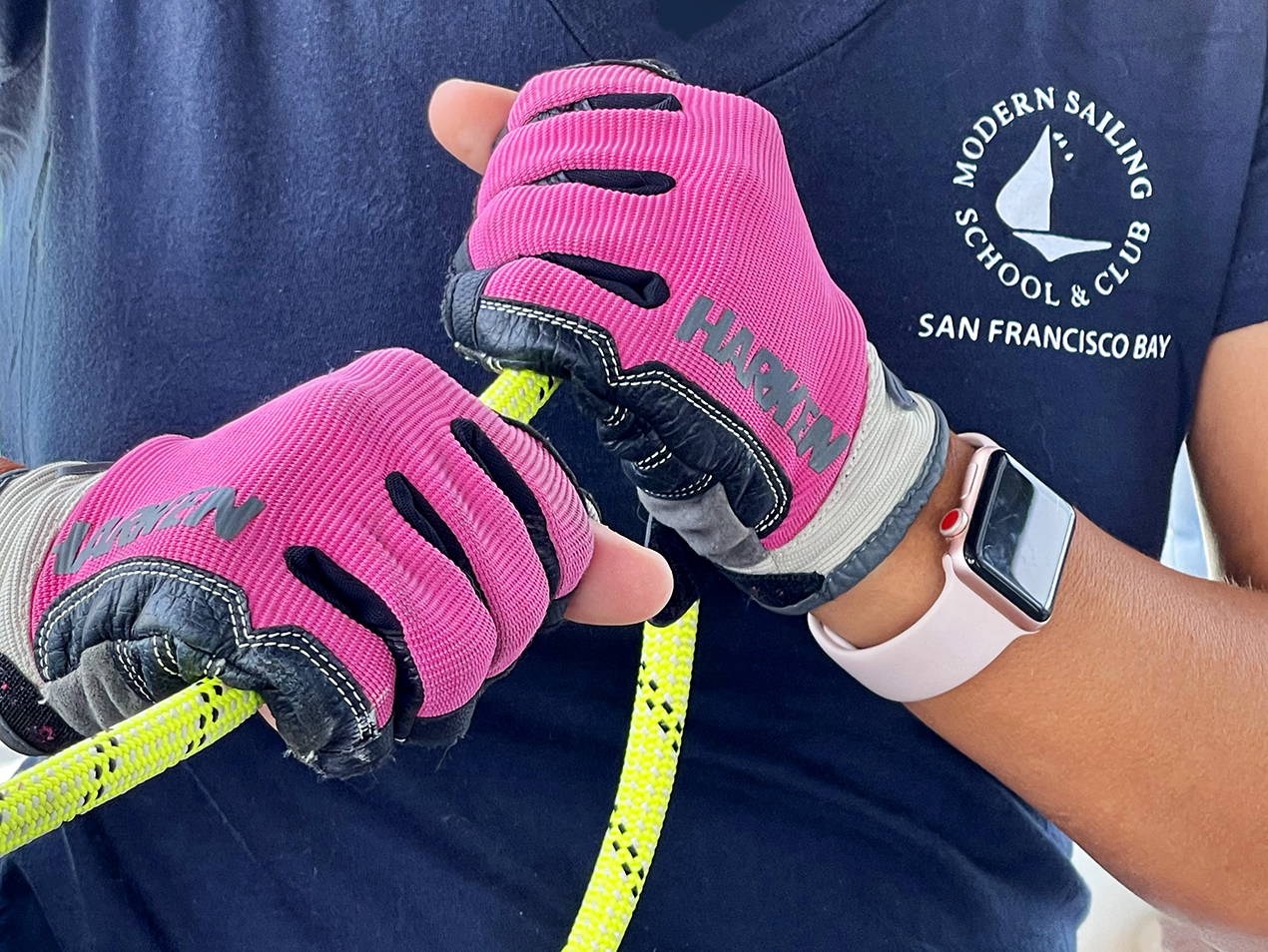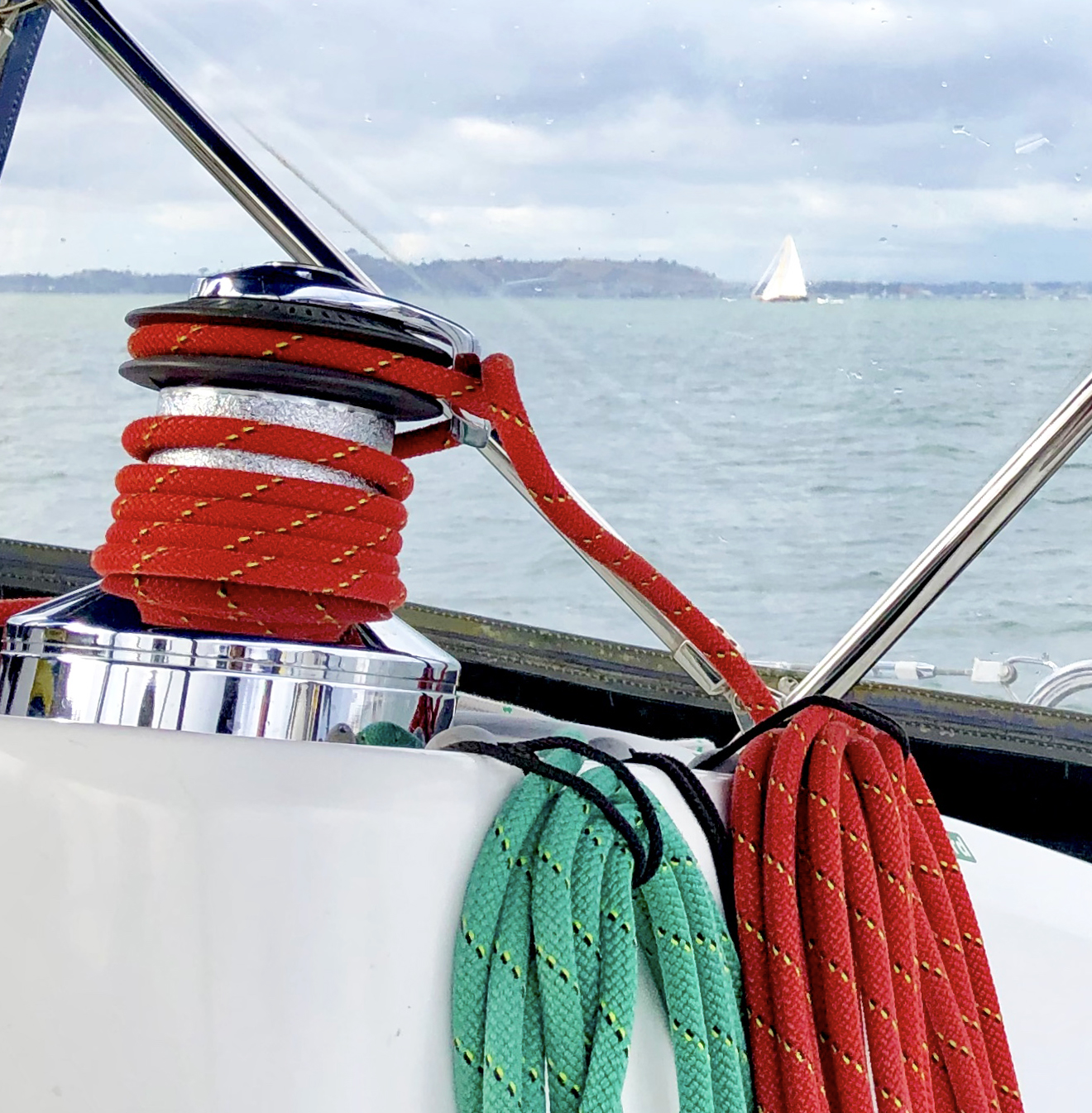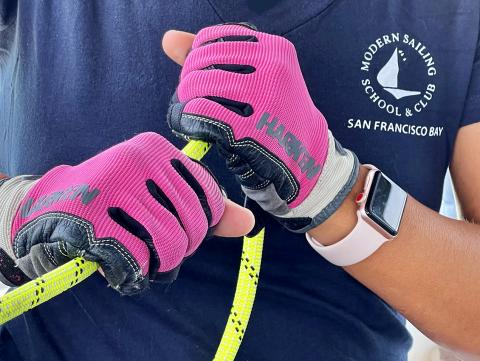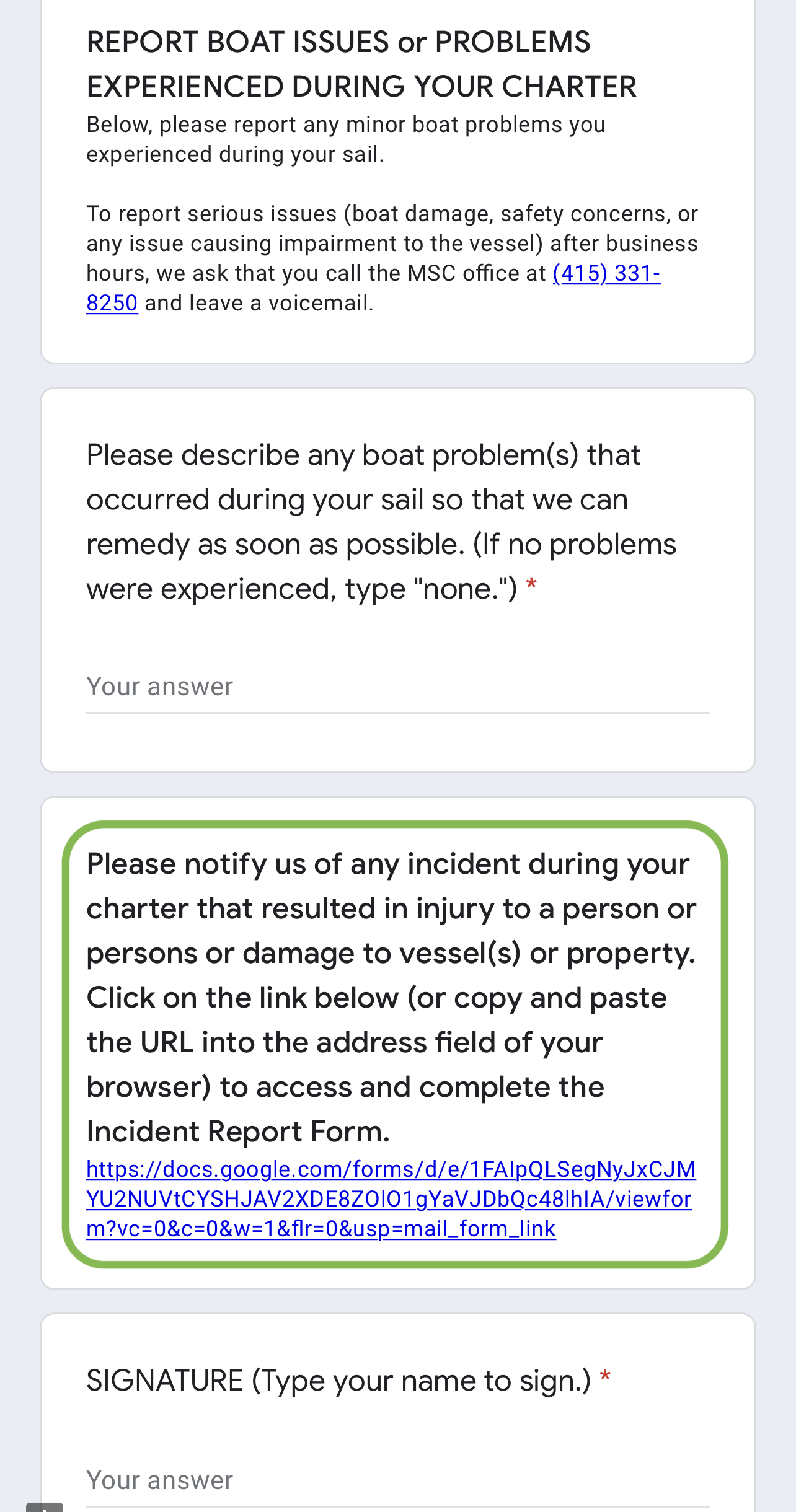
Sailing is a fun and healthy activity with many benefits for the mind, body, and spirit. Because sailors work with the powerful forces of wind and waves, sailing also happens to come with some risks. Learn about some of the most common injuries that sailors can experience and the best ways to significantly reduce the risks.
These tips apply to day sailors and cruisers sailing in mild to moderate conditions (less than 5' swell / up to 30 knots wind). More extreme conditions require additional safety practices not covered in this article.
Slips and Falls
Even on a calm day, a boat underway will constantly pitch and yaw to varying degrees and challenge your ability to stay balanced on your feet. On a choppy or rainy day, a wet deck doubles this challenge. There's a wide range of injuries that can occur to any part of the body as the result of a slip or fall: bruises, scrapes, sprains, broken bones, or head injuries.
How to Reduce the Risk of Slips and Falls
Appropriate footwear for boating is essential. It’s worthwhile to invest in a pair of quality deck shoes or sailing boots. Deck shoes will also help protect your toes if should you accidentally kick deck hardware. Many common athletic shoes can be surprisingly slippery on a wet deck and don’t provide protection for your toes, so look for footwear that is specifically designed for boating activities.
The adage “one hand for you, the other for the boat” provides the best guidance for preventing a fall. When moving about the boat, always keep one hand gripped onto a sturdy handhold.
In bumpy conditions, enjoy snacks or meals that can be easily eaten with one hand, such as sandwiches, wraps, and finger foods. You'll always have one hand free to hold onto the boat, if needed. In cold weather, hot soups, broths, or beverages that can be served in a thermos or well-sealed travel mug are a comforting and nourishing treat. (On the subject of eating underway, keep sharp knives and utensils out of the cockpit. Also, stainless steel, tin, or plastic containers are a safer choice than glass.)
When leaving the cockpit to move forward on deck, always move forward along the windward side of the boat. This helps to minimize the chance of falling overboard.
Lifelines are not designed to support the full weight of a human body. They also tend to give and flex with pressure, so they are not the most stable option as a handhold. When moving forward on deck, hold onto the sturdy grab rails on the coach roof and keep your center of gravity low. When conditions are especially rough, crawling forward on your hands and knees is a safer option than standing on your feet.
Stepping off a moving boat onto the dock is risky business. It is much safer to remain on deck and “lasso” the dock cleat, or leave a cleated dockline on the dock laying in such a way that it will be easy to pick up with a boat hook from on deck. Successfully catching dock cleats with a dock line can require some practice, so it's a good idea to spend some time perfecting the art before departure. Step off the boat only when the boat has stopped moving in the dock slip.
Remove winch handles from winches and stow them securely when not in use. Falling onto or stumbling into a protruding winch handle can cause severe bruises and injuries. Ouch! Winch handles can also snag clothing or PFDs, which could lead to a fall.

Keep your workspace neat when underway. Tidy lines will help prevent tripping or entanglement. Immediately after a maneuver that involves handling a line, tidy up by flaking the line neatly and tuck it in a pocket, hang it over an unused winch, or lay the flake on top of the coach roof.
Some sailors like to throw lines down the companionway so they aren’t hanging around in the cockpit. If you do so, make sure the lines aren’t encumbering the companionway steps or laying in the path sailors may take to get to the head, galley, or gear bags.
Watch this great video from the ASA to learn the best ways to keep your lines neat and tidy during and after your sail.
Shoulder and Back Injuries
Injuries to your back or shoulders can occur when hauling on lines under load. Similar to best practices for lifting heavy objects, using the strength of your lower body muscles helps to protect your more vulnerable back and shoulder muscles.
How to Reduce the Risk of Shoulder and Back Injuries
When grinding a winch under heavy load, stand or kneel over the winch and brace your knees and/or feet securely against the sides of the cockpit. On smaller boats, you may have no choice but to brace yourself with your knees. (Knee pads can help prevent bruising.) Depending on the location of the winch, you may opt to place one foot outside of the cockpit and brace it snugly against the toerail.
As forces increase, rather than relying solely on your arm muscles to rotate the winch handle, grip the winch handle with both hands and grind, applying the power of your leg muscles to push and pull your body weight against the handle. If the resistance seems excessive and the sail is still flogging, won't hoist all the way up, or won't furl all the way in/out, stop grinding and look for a possible jam. Never try to force a stuck sail, as this may cause damage to you or some part of the boat.
Some of the best practices to prevent finger and hand injuries can also help protect your shoulders from injury.
Finger and Hand Injuries
Fingers and hands are most vulnerable to injury when handling lines under load, especially when winches are involved.
How to Reduce the Risk of Finger and Hand Injuries

“Thumbs to the heart!” When handling a line under load, always hold it with your thumbs pointed towards your heart and your pinky fingers pointing away from your body. The bitter end of the line should come out between your thumb and forefinger, and the working end of the line (leading to the winch) will lay clamped between your pinky and the outer edge of your hand. Pull the line towards you hand over hand.
The reason for the “thumbs to the heart” rule is to prevent your thumb and forefinger from being pulled into the winch should the line suddenly run. You’ll also gain better leverage on the line by holding it this way. Also, be careful to keep your hands a practical distance from the winch when holding a line under load.
Never wrap a line around your hand. If you’re needing a bit more leverage when hauling in a line, resist the urge to wrap or coil the line around your hand. If needing a bit more grip, you can bundle a line in a figure 8 loop and grasp the 8 around its middle – but never, ever, wrap it around your hand, or any other part of your body for that matter. Better yet, enlist the help of a fellow crew member to help you hold the line, if one is available.
Wear sailing gloves to improve your grip and prevent chafe injuries to your hands. In windy San Francisco Bay, sailing gloves are a must.
Head Injuries
As every sailor knows, a low boom can present a serious danger to sailor’s heads. Before a tack or jibe, ensure that all crew are alert, paying attention, and positioned away from the boom’s reach.
Head bumps on dodgers, biminis, or companionway hatches can also happen, and the risk is increased when wearing a hat with a brim. Do your best to remain mindful of what's above you that may be blocked from your line of sight by your hat's brim. While hats can be important to protect your face and ears from sunburn, it's wise to balance the need for sun protection with the need for overhead visibility by choosing a hat with a moderate brim size.
Other Safety Tips
Know where to find the first aid kit on your boat. The electronic Boat Pre-Cruise (Check-Out) Form usually provides the location of the kit. Be sure to visually verify its location before you leave the dock. If a minor injury occurs, you'll be able to treat it more quickly.
Be aware that fatigue, getting too hot or cold, dehydration, seasickness, and intoxication can increase a sailor’s risk of injury. Do your best to get a good night’s sleep the day before a sail. Dress in layers, eat lightly and often, and drink plenty of water. Take steps to prevent and remedy seasickness. Most importantly, simply abstaining from alcohol will help you to remain mindful and safe aboard.
A well-intentioned sailor may be tempted to put his or her body at risk of injury to prevent an imminent collision. Never put any part of your body between your boat and another boat or a fixed object. Boats can be repaired – injuries can be permanent.
If you or your crew experience an injury during your charter that required medical treatment, please be sure to inform the Modern Sailing team. To make it easy for you to report accidents and injuries, the electronic Boat Check-In Form now includes a link to an Incident Report Form (as shown in the screenshot below).
Ready to learn more sailing safety and injury prevention tips? All of our ASA Courses cover safety topics in detail. Available in the winter season, our Heavy Weather Sailing Clinic also teaches advanced safety techniques for sailing in adverse conditions.
Article by Mary Elkins April 7, 2021



